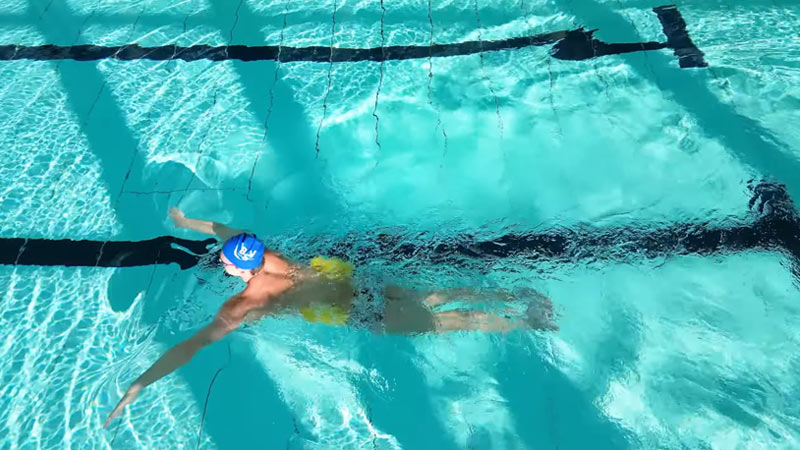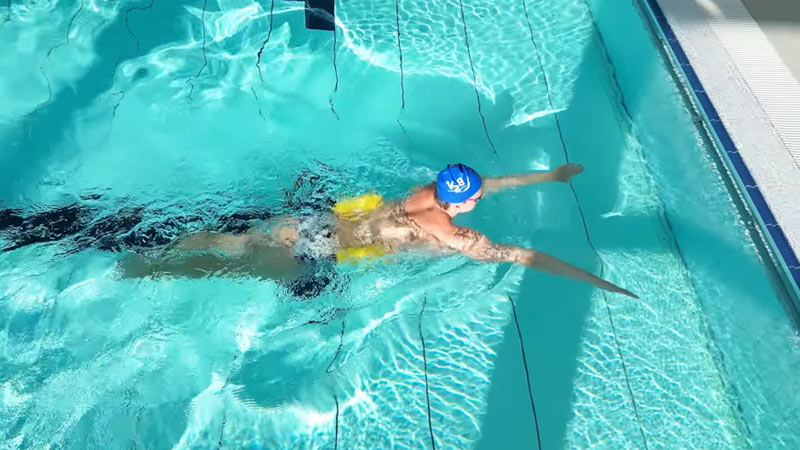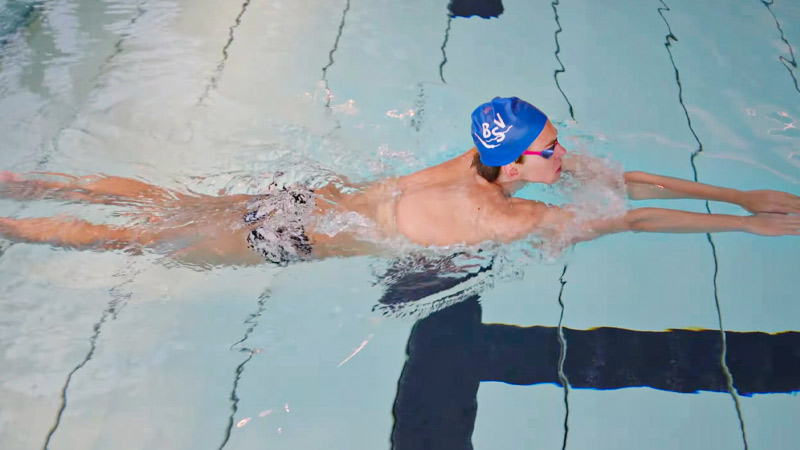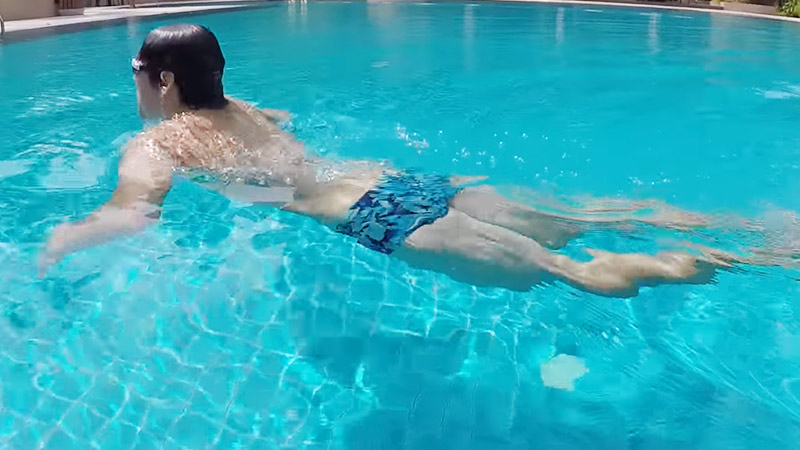Swimming is a beloved activity, offering relaxation and exercise. However, when stitches enter the picture, questions and concerns arise. “Is it ok to swim with stitches?” is a query often asked.
In this comprehensive guide, we’ll delve into this common dilemma, providing you with essential insights to make informed decisions about swimming with stitches.
We’ll explore the factors that influence this decision, from the type of wound, and location of stitches, to the stage of the healing process.
You’ll learn about the importance of consulting with your healthcare provider, understanding the risks, and taking necessary precautions to minimize potential complications.
We’ll also offer tips for safe swimming with stitches in both pools and natural water environments.
With this knowledge, you’ll be better equipped to balance your love for swimming with the need for proper wound care. So, let’s dive into the details and get your questions about swimming with stitches answered.
Is It OK to Swim with Stitches?

Swimming with stitches is generally not recommended, as it can increase the risk of infection and may compromise the healing process.
Stitches are used to close wounds and promote healing, and submerging them in water can soften the tissue and increase the risk of the wound reopening or becoming infected.
If you have recently had stitches, it’s important to follow your healthcare provider’s instructions regarding wound care and activity restrictions.
They may advise you to avoid swimming until the stitches are removed or until the wound has fully healed.
In some cases, they may recommend using waterproof dressings or protective covers to allow for limited water exposure, but this should be discussed with your healthcare provider.
It’s essential to prioritize the proper healing of your wound to prevent complications, and swimming with stitches can be risky.
Always consult with your healthcare provider for guidance on when it’s safe to resume swimming after a procedure or injury.
Things to Consider About Swimming After Stitches
There are many things you need to consider whether can you go swimming with stitches.
If you’re considering swimming after having stitches, there are several important things to keep in mind to ensure your safety and promote proper wound healing. Here are some key considerations:
- Consult with Your Healthcare Provider: Before you even think about swimming with stitches, consult with your healthcare provider. They can provide specific guidance based on your condition and the type of wound you have.
- Wait for Healing: It’s typically recommended to wait until your stitches are removed or until the wound has fully healed before swimming. The length of time will depend on the location and size of the wound, as well as the type of stitches used.
- Waterproof Coverings: In some cases, your healthcare provider may recommend using waterproof dressings or specialized wound coverings to protect the stitches and wound from water exposure. Make sure to use these as directed.
- Chlorinated Pools vs. Natural Water: Chlorinated pools are generally considered safer for swimming with stitches compared to natural bodies of water like lakes and rivers. Pool water is treated with chemicals that can help reduce the risk of infection.
- Be Cautious with Open Wounds: If your wound is still open or oozing, it’s best to avoid swimming entirely. Open wounds are more susceptible to infection.
- Avoid Submerging Stitches: Even if you’re allowed to swim, try to avoid submerging the area with stitches. Splashing in the water or floating on the surface may be a safer option to minimize water contact with the wound.
- Rinse and Dry Thoroughly: After swimming, be sure to rinse the wound with clean, fresh water to remove any pool water or contaminants. Pat the area dry gently with a clean, sterile cloth to prevent irritation.
- Monitor for Infection: Keep a close eye on the wound for any signs of infection, such as increased redness, swelling, warmth, pus, or worsening pain. If you notice any of these signs, contact your healthcare provider immediately.
- Sun Protection: If your wound is in an area that will be exposed to the sun, make sure to protect it from UV rays with appropriate clothing or sunscreen.
- Listen to Your Body: If you experience pain, discomfort, or any unusual sensations while swimming, it’s best to exit the water and assess the situation. Your body’s signals are important for ensuring your safety.
Ultimately, the decision to swim after having stitches should be made in consultation with your healthcare provider, who can provide specific recommendations based on your individual circumstances.
It’s crucial to prioritize proper wound healing and minimize the risk of infection or complications.
How Long After Stitches Can You Swim

There are some factors you need to consider to know how long after getting stitches can you swim.
The length of time you should wait before swimming after having stitches can vary depending on several factors, including the type of wound, the location of the stitches, and your healthcare provider’s recommendations.
In general, you should wait until your stitches are removed or until the wound is fully healed. Here are some general guidelines:
Sutures Removal
If you have non-absorbable stitches (sutures), your healthcare provider will typically schedule a follow-up appointment to remove them. You should wait until after the stitches are removed before swimming.
Absorbable Stitches
If your stitches are absorbable, they will dissolve on their own over time. In this case, you may still need to wait until the wound has fully healed before swimming.
Your healthcare provider will advise you on the appropriate timing.
Wound Healing
Wound healing times can vary, but a general guideline is to wait at least two weeks after stitches have been removed or until the wound is completely healed.
Deeper wounds or those in areas that are frequently moved or under tension may require more time to heal.
Healthcare Provider’s Advice
Your healthcare provider is the best source of guidance in this matter. They can examine the wound’s progress and give you specific recommendations based on your situation.
They may also provide information on using waterproof dressings or other precautions if you need to swim before the wound is fully healed.
Avoid Swimming if the Wound is Open
If your wound is still open, oozing, or has any signs of infection, it’s essential to avoid swimming altogether until the wound has closed and healed.
Follow Precautions
If you are given permission to swim before the wound is fully healed, follow any precautions or recommendations provided by your healthcare provider. This may include using waterproof coverings and avoiding submersion.
Remember that the primary concern when swimming with stitches is to prevent infection and protect the healing wound.
Always prioritize your health and follow the advice of your healthcare provider to ensure a safe and smooth recovery.
Tips for Swimming with Stitches in Pool

If you’ve received clearance from your healthcare provider to swim with stitches in a pool, it’s crucial to take precautions to protect the wound and reduce the risk of infection. Here are some tips for swimming with stitches in a pool:
- Wait for Clearance: Ensure you have received explicit permission from your healthcare provider to swim. Follow their recommendations and guidelines for swimming with stitches.
- Waterproof Dressing or Covering: Your healthcare provider may recommend using waterproof dressings, adhesive film, or specialized wound covers to protect the stitches and the wound. These coverings help keep the area dry and prevent water from coming into contact with the wound.
- Avoid Submersion: To minimize the risk of water exposure, it’s best to avoid submerging the area with stitches. Stay in the shallow end of the pool or swim on the surface without diving or submerging your body.
- Gently Pat Dry: After swimming, gently pat the wound area dry with a clean, sterile cloth or gauze. Avoid rubbing or scrubbing the area, as this can irritate the wound.
- Rinse with Clean Water: After swimming, rinse the wound with clean, fresh water to remove any pool water or contaminants. This helps keep the area clean and reduces the risk of infection.
- Protect from the Sun: If your wound is in an area exposed to the sun, use appropriate clothing or sunscreen to protect it from UV rays, as sun exposure can slow down the healing process.
- Watch for Signs of Infection: Keep a close eye on the wound for any signs of infection, such as increased redness, swelling, warmth, pus, or worsening pain. If you notice any of these signs, contact your healthcare provider immediately.
- Avoid Crowded Pools: If possible, choose a time to swim when the pool is less crowded to reduce the risk of accidental contact or contamination of your wound.
- Be Cautious with Water Activities: While swimming is generally permissible with precautions, be cautious about participating in water activities that involve more significant water exposure or higher risk of injury, such as water slides, water sports, or diving.
- Listen to Your Body: Pay close attention to any discomfort or unusual sensations during and after swimming. If you experience pain or any issues, exit the water and assess the situation.
Always prioritize your health and the healing of your wound.
Follow the specific guidance provided by your healthcare provider, and do not hesitate to reach out to them if you have any concerns or questions about swimming with stitches in a pool.
When to See A Doctor About Swimming After Stitches

If you have concerns or experience any issues related to swimming after having stitches, it’s essential to consult with a doctor promptly. Here are some situations in which you should see a doctor about swimming after stitches:
Signs of Infection
If you notice any signs of infection around the wound site, such as increased redness, swelling, warmth, pus, or worsening pain, you should see a doctor immediately. Infections can be serious and require prompt treatment.
Wound Opening or Bleeding
If the wound has reopened or is actively bleeding after swimming, this is a cause for concern. Seek medical attention to assess the extent of the damage and determine the appropriate course of action.
Excessive Pain or Discomfort
If you experience excessive pain, discomfort, or unusual sensations in the wound area during or after swimming, consult a doctor. This may indicate a problem with the healing process or the stitches.
Delayed Healing
If your wound is taking longer to heal than expected or if you notice any unusual changes in the appearance of the wound, it’s a good idea to check in with a healthcare provider.
They can evaluate the wound and make necessary adjustments to your care plan.
Persistent Swelling
Swelling is normal in the initial stages of wound healing, but if it persists or worsens, it could be a sign of a problem. A doctor can examine the wound to determine the cause.
Unexplained Symptoms
If you experience unexplained symptoms, such as fever, chills, or fatigue after swimming with stitches, it’s important to seek medical attention. These symptoms could be indicative of an underlying issue.
Concerns or Questions
If you have any doubts, questions, or concerns about swimming with stitches, it’s always a good idea to consult your healthcare provider.
They can provide guidance, address your concerns, and make recommendations based on your specific situation.
Remember that your healthcare provider is the best source of information and guidance when it comes to swimming after stitches.
It’s better to seek medical advice and address any potential issues promptly to ensure proper wound healing and minimize the risk of complications.
FAQs
Can you swim with stitches?
Swimming with stitches is generally not recommended, as it can increase the risk of infection and interfere with the healing process. Consult your healthcare provider for specific guidance on your situation.
Can you swim with stitches after 7 days?
Swimming with stitches after just 7 days may still pose a risk to the healing process.
It’s advisable to follow your healthcare provider’s recommendations, as they can assess your wound’s condition and provide personalized advice on when it’s safe to swim.
How long should I wait to swim after stitches are removed?
You should typically wait at least two weeks after stitches are removed or until the wound has fully healed before swimming.
Your healthcare provider’s advice is essential, as healing times may vary depending on the wound’s location and depth.
Can I swim if my stitches are absorbable?
Absorbable stitches still require wound healing. Follow your healthcare provider’s recommendations for swimming.
While they will dissolve on their own, it’s crucial to ensure the wound has completely healed before swimming.
What should I do if I experience pain while swimming with stitches?
If you experience pain, discomfort, or unusual sensations while swimming with stitches, exit the water and assess the situation. Consult your healthcare provider for guidance.
Pain may indicate issues with the healing process, and it’s important to address them promptly to avoid complications.
Wrapping Up
In the journey of healing, swimming with stitches can be a topic of concern. Our comprehensive guide has shed light on the key factors, precautions, and tips for this scenario.
While it’s crucial to prioritize your health and the healing process, it’s not always necessary to forgo the pleasure of swimming entirely.
By consulting your healthcare provider, taking necessary precautions, and following their guidance, you can enjoy the water safely.
Remember, every situation is unique, and what matters most is ensuring your stitches heal properly and minimizing the risk of infection.
With the insights gained here, you are better prepared to navigate the decision of swimming with stitches, striking the right balance between enjoying the water and taking care of your well-being.







